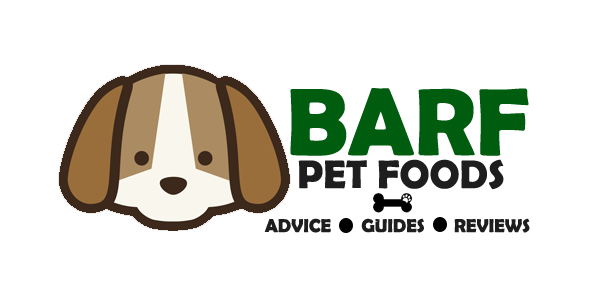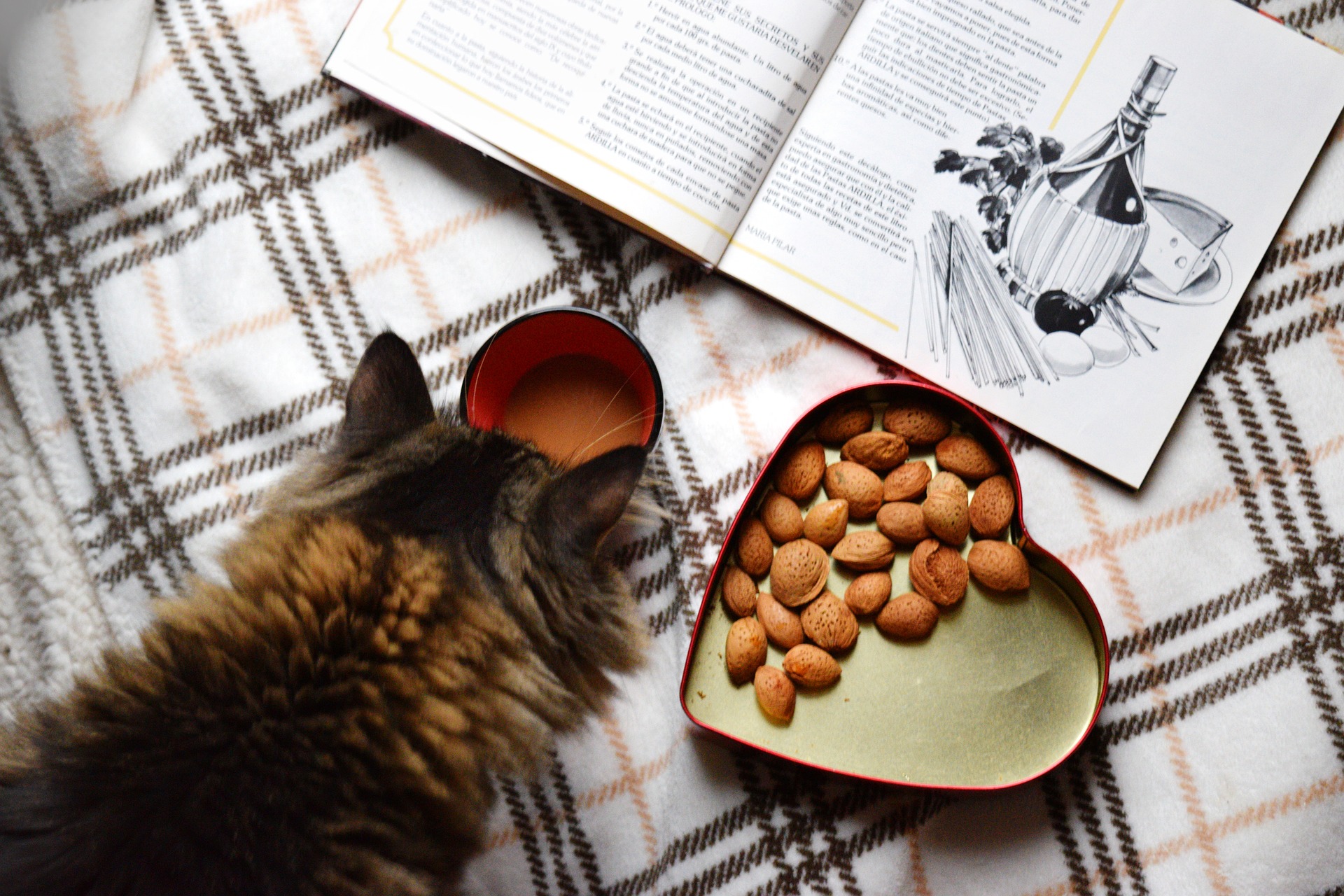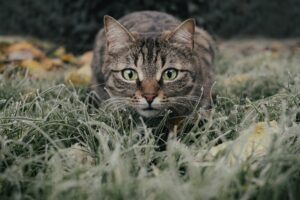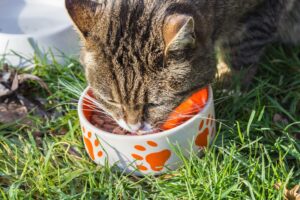In today’s article, we’re going to be delving deep into the world of the most nutritious cat foods currently available in the UK.
With what seems like an infinite number of cat food brands and products out there, it’s often challenging to ‘separate the wheat from the chaff ‘ and find cat food that is both healthy for your feline friend and for your wallet.
Because we know how time-consuming it is to research what the most nutritious cat foods are, we decided to do all the hard work for you. We’ve sifted through hundreds of products and found what we feel are the three best options where the nutritious cat food is concerned (with a few honourable mentions).
If you’d like to know what they are, feel free to scroll down the page to our list; however, if you’d like to learn what cats should eat and why, carry on reading.
As a cat parent, it’s essential to know what your cat should be eating and why as this will help you to make informed decisions regarding your cat’s food and treats – something that, in our opinion, all cat parents should have a basic knowledge of.
I think that’s about all we need to say for the introduction, so let’s crack on and find out the most nutritious cat foods currently available on the market.
If you have any questions, suggestions or feedback, please don’t hesitate to get in touch – we’d love to hear from you!
Cat Nutrition: What Is The Most Nutritious Food for Cats?
There are no two ways about it; nutrition is the most important aspect of health; therefore, it’s crucial to feed your cat the right foods to ensure they live a long and healthy life.
But what is the right food?
Cat food comes into primary forms: wet food and dry food. Some cat owners opt for the former, some for the latter, and some for a combination of the two. The question is, which of these three options is the best?
After carrying out much research over many years, it’s apparent that wet food is the most nutritious option for cats. While your feline friend will survive on a dry-food diet, it does have three main disadvantages compared to wet food; these are:
- The water content of dry ‘kibble’ foods is too low.
- The amount of carbohydrates is often too high.
- The type of protein – i.e. plant protein – is not an optimal choice for cats.
- It’s highly processed (more so than wet foods) – often at high temperatures – which can destroy macro- and micronutrients.
Ok, so now we’ve established that wet foods are more nutritious than dry ‘kibble’ foods; let’s take a look at the optimum nutritional profile of cat food.
Cat Nutrition: Animal-based Protein is a Must
Cats need animal-based protein; therefore, it’s is essential to opt for foods that contain high levels of animal protein.
Why do cats need animal-based protein?
Cats are ‘obligate carnivores’, which means that they were built by nature to get their nutritional needs met by consuming large amounts of animal-based protein.
It’s absolutely essential to remember that proteins are not created equally and that some forms of protein are far superior to others where your cat’s diet is concerned.
Protein that is derived from animal muscle and tissue contains the full spectrum of amino acids (essential and non-essential). However, protein from plant-based sources does not contain a complete amino acid profile as is required by obligate carnivores like cats.
Unlike humans and dogs who can happily survive (and thrive) by consuming both animal-based and plant-based protein sources, a cat’s protein requirements must come from animal-based sources.
Why?
Because cats lack a series of specific metabolic pathways that allow for efficient uptake and utilisation of plant-based protein sources.
Let’s take the amino acid Taurine, for example. A taurine deficiency can, at worst, lead to cardiac issues and blindness in cats. Animal-based protein sources are abundant in Taurine, whereas plant-based protein sources are not.
At this point, you’re probably wondering, ‘Why are plant-based proteins used in cat food?’.
Well, the answer is simple: plant-based proteins are much cheaper than animal proteins, and as most manufacturers are primarily concerned about profit, they’ll gladly pump dry cat food with poor protein sources just to live their pockets.
Luckily, this isn’t the case with wet foods, which is why we highly recommend wet foods over dry foods.
Cat Nutrition: Avoiding Carbohydrates
Like plant-based protein sources, carbohydrates are cheap and, therefore, are often used as ‘filler’ in dry cat foods to make products cheaper to manufacture.
Cats don’t need carbohydrates in their diet. They can survive and thrive without consuming any carbs at all.
Think about it. In a natural setting, cats don’t eat crops such as grains, potatoes, peas etc.; they chase down and hunt other animals. In the wild, your feline friend would be consuming a diet that consists of high levels of protein, high levels of moisture, moderate levels of fat and minuscule levels of carbohydrates – all of which would come from animal meat and organs.
When we say a minuscule amount of carbohydrates, we mean 1-2%. If you look at the vast majority of dry cat foods, they typically contain between 30-50%! Far, far, far too much.
On the other hand, wet foods typically contain less than 10% carbohydrates, which is much more ideal. Luckily, we know which are the best and most nutritious wet foods for cats, which we’ll be listing at the end of this article.
Cat Nutrition: Water-Rich Foods
Given that cats don’t have a strong thirst for water, it’s imperative that they consume sufficient amounts of water from their food sources. If they don’t, it’s likely they’ll become dehydrated, which can be fatal.
In the wild, a cat’s prey contains anywhere between 65-75% water; therefore, it’s essential that the food(s) your cat consumes matches this level. Dry foods only contain around 5 to 10% water, whereas wet foods contain somewhere around the 70-80% mark. Furthermore, cats eating wet food will typically consume twice the amount of water a cat who eats dry food and drinks from a bowl will consume!
The Most Nutritious Cat Foods: Three of the Best
If you’ve read the above, you’ll now know that high-quality and species-appropriate cat foods will contain:
- High levels of animal-based protein.
- Low levels of carbohydrates.
- Moderate levels of fat.
- High water content.
So, without further ado, let’s check out our top three most nutritious cat foods.
#1 – MjAMjAM Wet Cat Food
Size: 6 x 400g tins.
Flavours: Venison & Rabbit, Turkey, Duck & Poultry, Hearts, Chicken, and Beef.
Available in six different flavours, MjAMjAM (strange name, I know!) is one of the best and most nutritious cat foods available on the market today. A quick glimpse at the ingredient list of all flavours tells you this straight away; all flavours contain at least 95% meat and offal (a combination of meat and offal is better than merely meat, i.e. muscle tissue, alone), with a small amount of vegetables, and added micronutrients to ensure it contains everything your cat requires.
Each flavour all contains between 10.5% and 12% protein and between 6% and 7% fat, meaning regardless which flavour(s) you opt for, your feline friend will get a healthy dose of protein and fats. Furthermore, they also have a high water content (although fresh drinking water should always be available).
Is it cost-effective?
According to the manufacturer’s feeding guidelines, a 3kg cat should eat 200g (½ a tin) per day, and a 5kg cat should eat 400g (one full tin) per day.
At Amazon’s current price of £12.40 for six tins, the cost per day / month will be the following:
3kg cat: £1.04 per day / £31.20 per month
5kg cat: £2.07 per day / £62.10 per month
Our verdict: A high-quality and highly nutritious cat food that contains a decent helping of protein, plenty of fats for energy, a full range of essential vitamins and minerals, high water content, and a variety of meats and offal – all at a very good price. Although not the cheapest food, it’s not the most expensive either, and for the money, it is exceptional value.
#2 – Lily’s Kitchen Adult Organic Fish Dinner
Size: 19 x 85g
Flavour: Fish
Given that Lily’s Kitchen is one of the leading pet food brands out there, it should come as no surprise to see one of their wet cat food offerings on this list. Although they have several wet cat food products, we’ve chosen the Organic Pate in fish flavour because it’s our favourite of the lot.
Why?
Because it contains organic fish, in addition to organic pork, chicken, and beef – in addition a full range of vitamins and minerals, no carbohydrate-based fillers or cheap ingredients, and is a complete meal. Plus, it has 80% moisture content which is perfect for keeping your cat hydrated.
Lily’s Kitchen Organic Fish Dinner also contains 10% protein and 6% fats, which is plenty to keep your cat healthy and full of energy.
Is it cost-effective?
According to the manufacturer’s feeding guidelines, a 3kg cat should eat 1 ½ packs per day, and a 5kg cat should eat 2 ½ packs per day.
At Amazon’s current price of £14.25 for 19 packs, the cost per day / month will be the following:
3kg cat: £1.13 per day / £33.90 per month
5kg cat: £1.88 per day / £56.40 per month
Our verdict: If you’re a fan of organic foods, this should be your number one choice given that it’s highly nutritious, jam-packed with high-quality ingredients, contains all the vitamins and minerals a cat needs and has a high water content to keep your moggy fully hydrated. Plus, it’s really good value for money given the quality. A no-brainer, we think!
#3 – Hi Life It’s Only Natural Complete Wet Food for Mature Cats (7+)
Size: 32 x 70g
Flavour: Tuna / Chicken
There’s no way we could compile a list of the most nutritious cat foods without including senior cat food, so here we are with Hi Life’s ‘It’s Only Natural’ complete wet food for mature cats (7+).
What we love about this food is the fact it’s 100% natural. Both tuna and chicken flavours contain 50% pure, unadulterated, high-quality meat, in addition to a few extra ‘goodies’ to help boost mobility and joint health.
But the positives don’t stop there. As cats get older, they require less energy and are more prone to putting on weight; however, they still require high levels of protein. Hi Life’s wet food for senior cat contains 12% protein and just 3.5% fat, which is perfect for older cats who spend most of their time sleeping and lounging around (they deserve it!). Plus, it has a water content of 83%, which is purrrfect for ensuring your cat is hydrated (sorry, I couldn’t resist!).
Is it cost-effective?
According to the manufacturer’s feeding guidelines, a 4kg should eat three pouches per day. At Amazon’s current price of $18 (chicken) and $19.80 (tuna) for 32 pouches, the cost per day / month will be the following:
Chicken: £1.69 per day / £50.70 per month
Tuna: £1.86 per day / £55.80 per month
Our verdict: For older cats, Hi Life’s ‘It’s Only Natural’ wet food is, in our opinion, the best choice. Not only does it contain high-quality ingredients, but it also has everything your mature cat requires and has a few extras to help with joint health and mobility. Plus, it has a high water content which is a crucial element to any wet cat food.









